Sharing the Collection: 50 Years of Exhibitions
By: ArtBank / 21 December 2022The offices of the Canada Council for the Arts, located at 150 Elgin, are within walking distance from Ottawa’s City Hall and Parliament Hill. Unless you work there, you might not think to visit the building. But you would be pleasantly surprised to discover that the Canada Council offices are also home to an exhibition space on the main floor called Âjagemô. Its exhibitions, which are free and open to the public, are programmed by the Art Bank team.
Loans to Canadian museums and galleries: The early days
Even though the Art Bank came into existence 50 years ago, it didn’t always have a dedicated space for exhibitions. Created in 1972, the Art Bank quickly established itself as a leader in contemporary Canadian art and began to garner nation-wide recognition for its loan program. In the 1970s, Canadian museums and galleries had fledgling permanent collections of contemporary Canadian art. In contrast, by 1978 the Art Bank’s collection held close to 8000 works of art purchased from living Canadian artists. This uniquely positioned the Art Bank to support exhibitions in public places. The Art Bank began to lend out works for display in various museum and gallery settings—something it still does to this day.
As time went on, the Art Bank’s collection evolved to represent the changes taking place in contemporary art in Canada. The collection became more diverse, as did the channels the Art Bank used to connect with Canadians, including working with external partners to co-present exhibitions in a variety of spaces.
This initiative took the Art Bank’s collection beyond museums, galleries and workspaces. It introduced the collection to new locations, such as the Canadian Embassy in Washington and Rideau Hall in Ottawa.
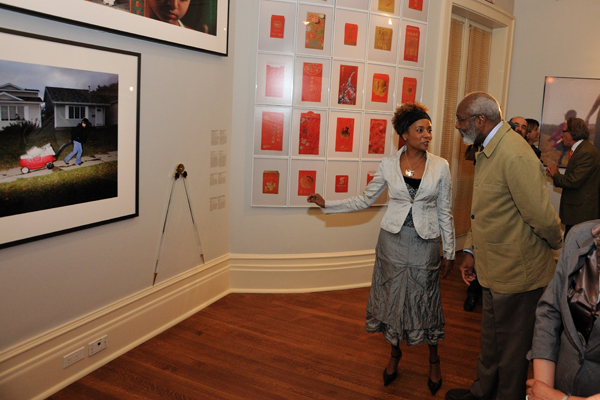 The Art Bank co-created Diaspor’Art, an exhibition of newly acquired works of art by racialized artists, installed at Rideau Hall. The Right Honourable Michaëlle Jean, former Governor General of Canada, and Tim Whiten discuss his artwork in the show.
The Art Bank co-created Diaspor’Art, an exhibition of newly acquired works of art by racialized artists, installed at Rideau Hall. The Right Honourable Michaëlle Jean, former Governor General of Canada, and Tim Whiten discuss his artwork in the show.
At home in Âjagemô
A new chapter in the Art Bank’s story began in 2014, with the Council’s move to 150 Elgin Street. The Art Bank was entrusted with programming a dedicated exhibition space called Âjagemô.
The name Âjagemô, which means “crossroads” in Anishinaabemowin, was gifted to the Canada Council by an Algonquin elder. The exhibition space became not only a window on Canada’s vibrant art scene, but also a meeting place where ideas and views could intersect. Art builds bridges and fosters community. Âjagemô was soon at the heart of that.
In this space, the Art Bank regularly works with curators to program exhibitions that tell stories aligned with the Council’s broader mission and values, such as drawing attention to global issues such as climate change, supporting Indigenous cultural sovereignty, and demonstrating inclusion.
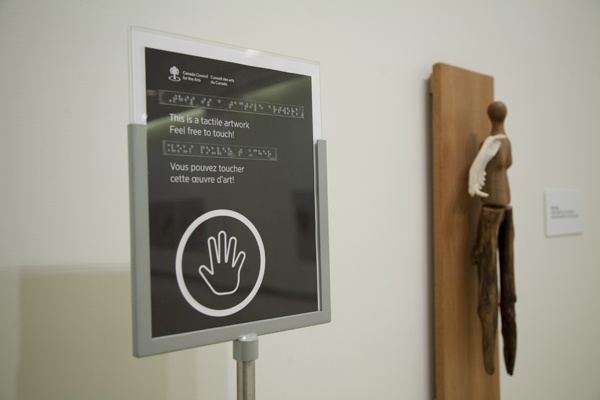 Visitors were invited to engage with soft touch, a tactile work in Persimmon Blackbridge’s Constructed Identities, exhibited in Âjagemô in 2018.
Visitors were invited to engage with soft touch, a tactile work in Persimmon Blackbridge’s Constructed Identities, exhibited in Âjagemô in 2018.
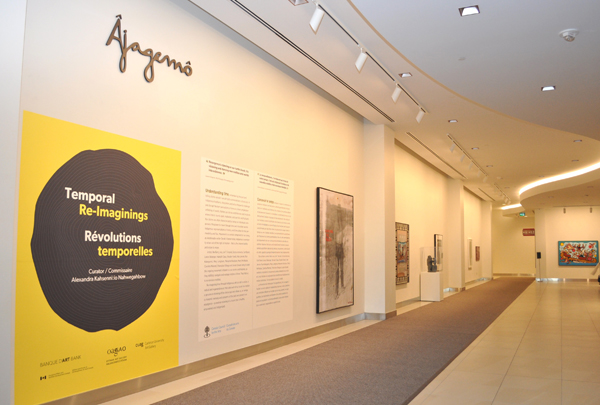 Temporal Re-Imaginings, on display in Âjagemô in 2015-16, explored how Indigenous traditions, storytellers and artists frequently challenge and disrupt Western perceptions of time as a linear, progressive unfolding of events. Âjagemô is home to these stories and the conversations they evoke.
Temporal Re-Imaginings, on display in Âjagemô in 2015-16, explored how Indigenous traditions, storytellers and artists frequently challenge and disrupt Western perceptions of time as a linear, progressive unfolding of events. Âjagemô is home to these stories and the conversations they evoke.
Looking the World in the Face
The Art Bank is a national collection, meant for people across Canada. Looking the World in the Face, strives to represent the Canada of today. The exhibition includes 39 works of art by Indigenous and racialized artists. “In the 1970s, the Art Bank was quite out there collecting Indigenous art because many institutions weren’t paying attention to it yet,” explains Amin Alsaden, the curator of the exhibition. “You will walk into the exhibition space and be surrounded by faces you don’t often see in the art world.”
Looking the World in the Face immerses its audience in multiple depictions of self and community. “This is an exhibition that set out to look for the faces of Canada and found a surprising Canada looking back. It found artists who audaciously insist on being seen, artists who also revealed the faces of their communities and, by doing so, have inadvertently confronted us with the face of the world,” says Alsaden.
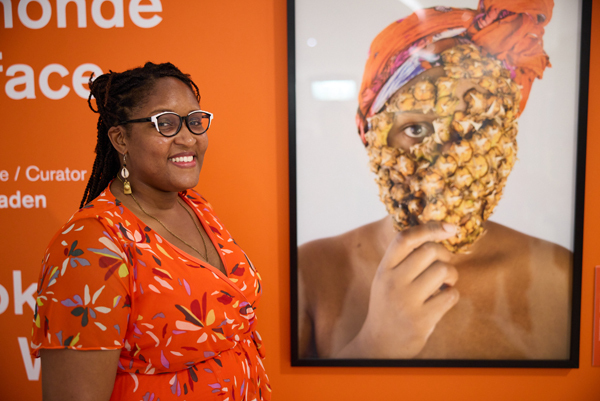 Cécilia Bracmort with her artwork, Peau nature morte, sans titre III (2020), featured in the Looking the World in the Face exhibition.
Cécilia Bracmort with her artwork, Peau nature morte, sans titre III (2020), featured in the Looking the World in the Face exhibition.
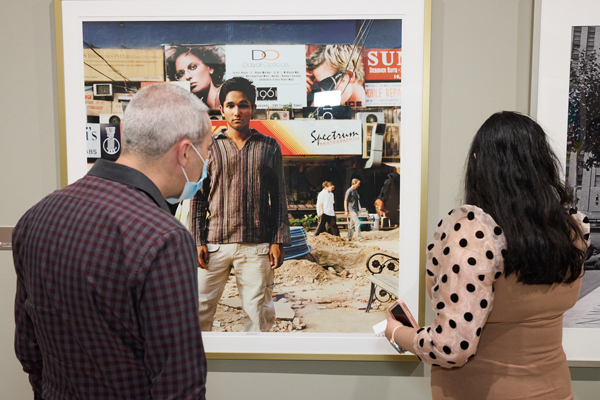 Viewers examine Khiyanur (2007) by Sunil Gupta that is part of the exhibition.
Viewers examine Khiyanur (2007) by Sunil Gupta that is part of the exhibition.
Visit Âjagemô
The next time you find yourself strolling on Elgin Street, consider visiting the Looking the World in the Face exhibition. It was recently extended to May 22, 2023, so more people can visit the exhibition in person.
If Ottawa is far from home, video tours of some exhibits can also be viewed online. Learn more about current, past and future exhibits by visiting the Âjagemô Exhibition Space.